Access Resource Kit (ARK) - Disability Services Commission
Access Resource Kit (ARK) - Disability Services Commission
Access Resource Kit (ARK) - Disability Services Commission
You also want an ePaper? Increase the reach of your titles
YUMPU automatically turns print PDFs into web optimized ePapers that Google loves.
DESIGNING FOR ACCESS<br />
The description includes those people who:<br />
• use a walking aid (crutches, stick, cane, frame, guide dog);<br />
• wear a leg brace or have an artificial limb;<br />
• have limited physical stamina;<br />
• have stiff hips, knees or ankles;<br />
• have uncoordinated movements;<br />
• walk slowly; or<br />
• have balance problems.<br />
Design considerations for people who experience difficulties walking include:<br />
• specific attention to steps and handrail design to ensure adequate support and a<br />
feeling of confidence and ease when negotiating steps;<br />
• provision of cover from weather as slowness of movement can result in greater time<br />
spent along walkways and getting into buildings;<br />
• provision of seating in waiting areas, at counters and along lengthy walkways to<br />
reduce fatigue;<br />
• awareness that a ramp can prove difficult for some ambulant people so steps and lifts<br />
provide useful alternatives;<br />
• identifying access hazards associated with doors, including the need to manipulate a<br />
handle while using a walking aid and difficulty moving quickly through swinging<br />
doors;<br />
• providing surface finishes that are slip-resistant, evenly laid and free of hazards to<br />
minimise risk of injury; and<br />
• minimising street clutter caused by signs and billboards and placing it away from the<br />
main pedestrian flow.<br />
People who have difficulty holding and/or manipulating objects.<br />
Problems associated with manipulation and holding may be due to arthritis, nerve injuries<br />
and upper limb (finger, hand or arm) amputation.<br />
Design considerations include:<br />
• the operation of fittings such as door handles, switches, lift buttons and taps.<br />
(generally levers are preferable to knobs); and<br />
• the operation of switches or buttons (large switches or push buttons that can be used<br />
by the palm of the hand are preferable to switches or lift buttons that need finger<br />
operation) while sensor devices may assist some people.<br />
People with Disabilities and Planning for <strong>Access</strong> (Aust Standards updated February 2011)1.10


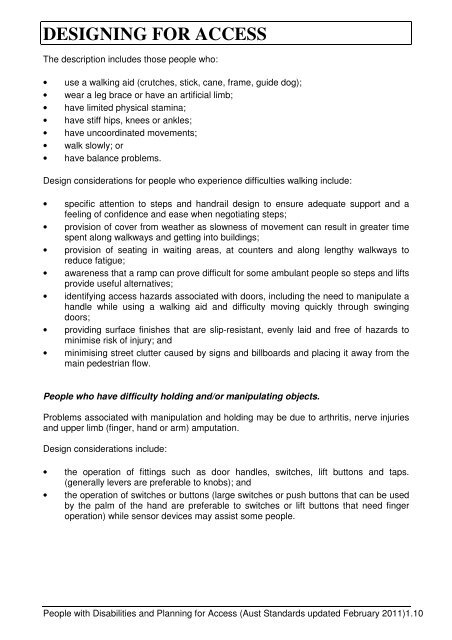

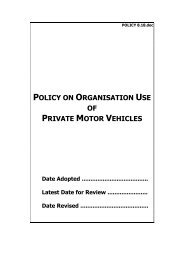



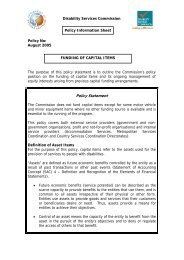
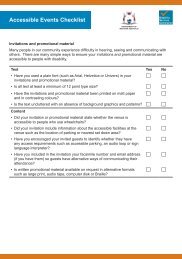
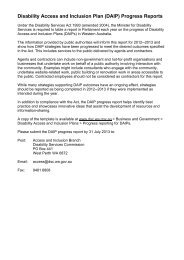
![Heerarka Adeegyada Naafada [PDF 102 kB] - Disability Services ...](https://img.yumpu.com/22096139/1/184x260/heerarka-adeegyada-naafada-pdf-102-kb-disability-services-.jpg?quality=85)




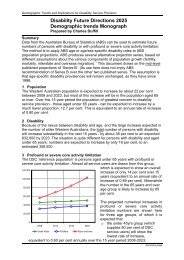
![معايير خدمات الإعاقة [PDF 297 kB] - Disability Services Commission](https://img.yumpu.com/22096120/1/184x260/-pdf-297-kb-disability-services-commission.jpg?quality=85)